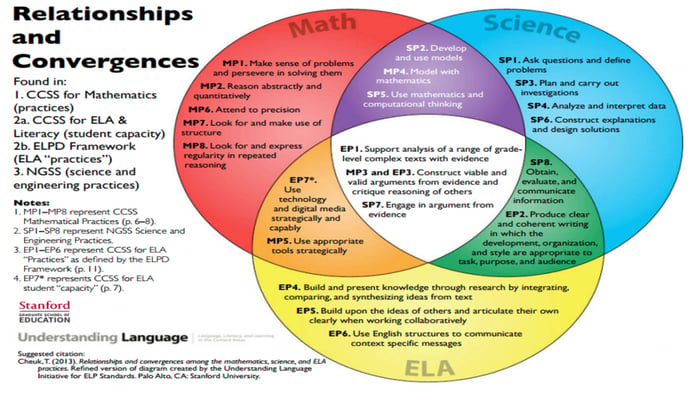By Dr. David Reese, Ed. D.
In my research to learn about what attributes school systems envision for their future graduates, I’ve found that content applications were a constant based upon academic standards. However, many systems focused on how the content was to be used by the future graduates.
Based on this research, I have compiled 4 content considerations that educational leaders should consider as they plan for teaching and graduating future ready learners:
- Core Knowledge – Whether national, state, or local standards, the foundational knowledge of each subject is critical for students to have as part of their education. In looking at these standards, a majority of the themes appear to be consistent (ie. Life Science, Writing, Algebra). The specifics and depth of knowledge called for in the standards vary by state and locality. It is important for educational leaders to decide what is foundational and should be known by all students. It is important to understand that standards are designed to be met by all students. What standards make up the core knowledge offered in your school?
- Apply and Transfer of Content Knowledge, Skills and Conceptual Understanding – To succeed in the world beyond school it is essential for students to be able to apply and transfer what is learned in the classroom. The degree to which this happens in each classroom helps determine the success or failure for students. The instructional strategies selected and the vision for student learning will drive this application and help students understand why they need to know the content and when they may use it beyond school. Jay McTighe (2014) identifies several characteristics of transfer goals for consideration:
- They are long-term in nature; i.e., they develop and deepen over time
- They are performance based; i.e., require application (not simply recall)
- The application occurs in new situations, not ones previously taught or encountered; i.e., the task cannot be accomplished as a result of rote learning
- The transfer requires a thoughtful assessment of which prior learning applies here; i.e., some strategic thinking is required (not simply “plugging in” skill and facts)
- The learners must apply their learning autonomously on their own, without coaching or excessive hand-holding by a teacher)
- Transfer calls for the use of habits of mind; i.e., good judgment, self-regulation, persistence along with academic understanding, knowledge, and skill
- College and Career Ready: This attribute has been tied to educational initiatives for years. This is very important for every student in the school. However, what this means can be vastly different for many students. From a content perspective, this indicates that students have the knowledge to pursue entry-level classes at the college level. The depth of these classes may be determined by the course sequence taken by the student. School leaders must consider this situation as they create scope and sequence in the content areas. In today’s world, career-ready is a rapidly changing experience and definition. Achieve is an organization that offers definitions of these ideas for consideration.
- Content Practices: These practices are developed in many different subjects. They are meant to identify what students should be able to do with the content knowledge in the subject area. Practices are often similar across content areas and so the skills developed can be reinforced across these subjects. These ideas connect to the instructional strategies utilized in the classroom and the opportunities students are given to apply content and practices in real world situations. The Venn Diagram below presents an excellent visualization of this idea.

The 4 considerations above are critical for educational leaders when developing vertical and horizontal curriculum and content pathways across the school system. Demonstrating academic and professional excellence while using and applying classroom knowledge can help students succeed and make a difference in the world.